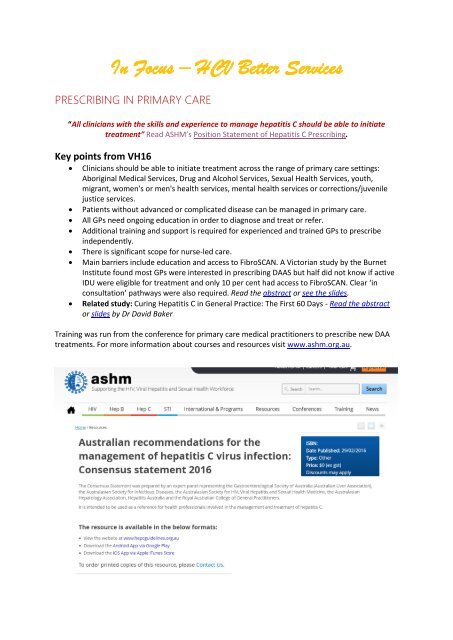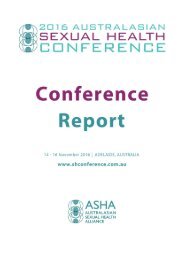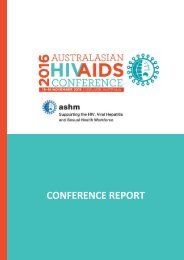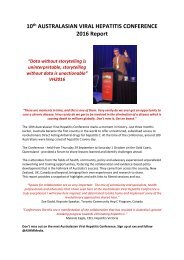Create successful ePaper yourself
Turn your PDF publications into a flip-book with our unique Google optimized e-Paper software.
In Focus – HCV Better Services<br />
PRESCRIBING IN PRIMARY CARE<br />
“All clinicians with the skills and experience to manage hepatitis C should be able to initiate<br />
treatment” Read ASHM’s Position Statement of Hepatitis C Prescribing.<br />
Key points from <strong>VH</strong>16<br />
<br />
<br />
<br />
<br />
<br />
<br />
<br />
Clinicians should be able to initiate treatment across the range of primary care settings:<br />
Aboriginal Medical Services, Drug and Alcohol Services, Sexual Health Services, youth,<br />
migrant, women's or men's health services, mental health services or corrections/juvenile<br />
justice services.<br />
Patients without advanced or complicated disease can be managed in primary care.<br />
All GPs need ongoing education in order to diagnose and treat or refer.<br />
Additional training and support is required for experienced and trained GPs to prescribe<br />
independently.<br />
There is significant scope for nurse-led care.<br />
Main barriers include education and access to FibroSCAN. A Victorian study by the Burnet<br />
Institute found most GPs were interested in prescribing DAAS but half did not know if active<br />
IDU were eligible for treatment and only 10 per cent had access to FibroSCAN. Clear ‘in<br />
consultation’ pathways were also required. Read the abstract or see the slides.<br />
Related study: Curing Hepatitis C in General Practice: The First 60 Days - Read the abstract<br />
or slides by Dr David Baker<br />
Training was run from the conference for primary care medical practitioners to prescribe new DAA<br />
treatments. For more information about courses and resources visit www.ashm.org.au.















